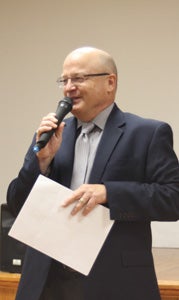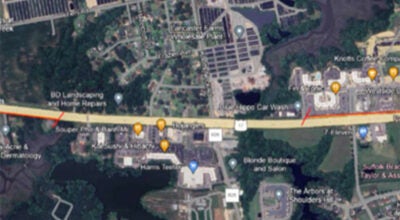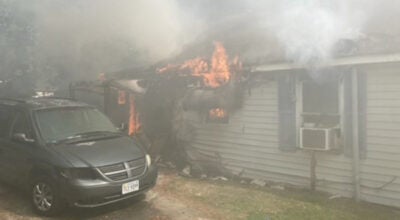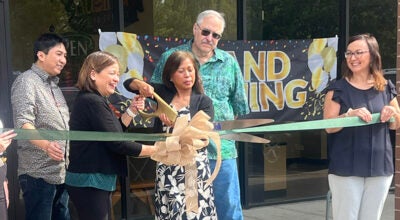‘Three P’s’ threaten the Bay
Published 11:12 pm Friday, October 17, 2014
Focusing on the River Bluff development at Hillpoint, “When the Chesapeake Bay Preservation Act Fails: A Suffolk Case Study” called for reforms to city protocols for applications to clear vegetation inside the 100-foot buffer zone — a key component of the act — along with stronger enforcement and stiffer penalties.

River talk: Roy Hoagland, director of the College of William & Mary Law School’s Virginia Coastal Policy Clinic, addresses a Nansemond River Preservation Alliance audience in North Suffolk on Wednesday. He spoke about “the three P’s: phosphorus, politics and people.”
The college law school’s Virginia Coastal Policy Clinic published the critique. On Wednesday, the clinic’s director appointed in July, Roy Hoagland, featured at the latest installment of the Nansemond River Preservation Alliance’s “River Talk” program.
At the Chesapeake Bay Foundation, and the respective law schools of the universities of Virginia and Richmond, Hoagland has worked on environmental issues facing the bay for more than 25 years.
At Ruritan Hall in Eclipse, in his first speaking engagement as head of the William & Mary clinic, Hoagland discussed what he called the “three P’s” threatening the Chesapeake Bay — phosphorus, politics and people.
Phosphorus is now recognized as one of the worst pollutants in Virginia’s rivers and the bay, Hoagland said.
About half of necessary reductions in phosphorus and nitrogen have been made since the Chesapeake Bay Agreement was signed in 1983, but pollution levels have been increasing again since 2005, Hoagland said.
“The scientists are not quite sure exactly why,” he said. “They believe it’s agriculture, and they believe it’s urbanization.’
Agriculture, he said, is “by far the largest contributor.” The technology for improving pollution output from sewage treatment plants has been exhausted, he added.
On the next “P,” Hoagland said that with partisan politics, it would be impossible today to implement the various pieces of state and federal legislation responsible for the meaningful improvement in water quality of recent decades.
Earlier, Hoagland pointed out that progress is being made. Visiting Mount Vernon years ago, he recalled a sign warning against human contact with the waters of the Potomac. “There have been a host of laws, regulations and polices that have, in fact, changed the way we care for our rivers,” he said.
But all that legislation had support from Democrats and Republicans, he said, adding, “Politics today would not let us get those bills through.”
On the third and final “P,” Hoagland noted the population of Hampton Roads is forecast to rise to 1.9 million by 2030, adding “I don’t believe we are anywhere near where we need to be” to offset that growth with pollution reductions.
“We have buried our heads in the sand for a long time, and it’s going to come back to bite us,” Hoagland said.
Despite some dire warnings, Hoagland ultimately expressed hope. “Before the Clean Water Act, rivers were burning — literally,” he said.
Getting it right is about more than just protecting the environment for future generations, he said. “It’s just so critical to our own mental health and spiritual wellbeing.”






